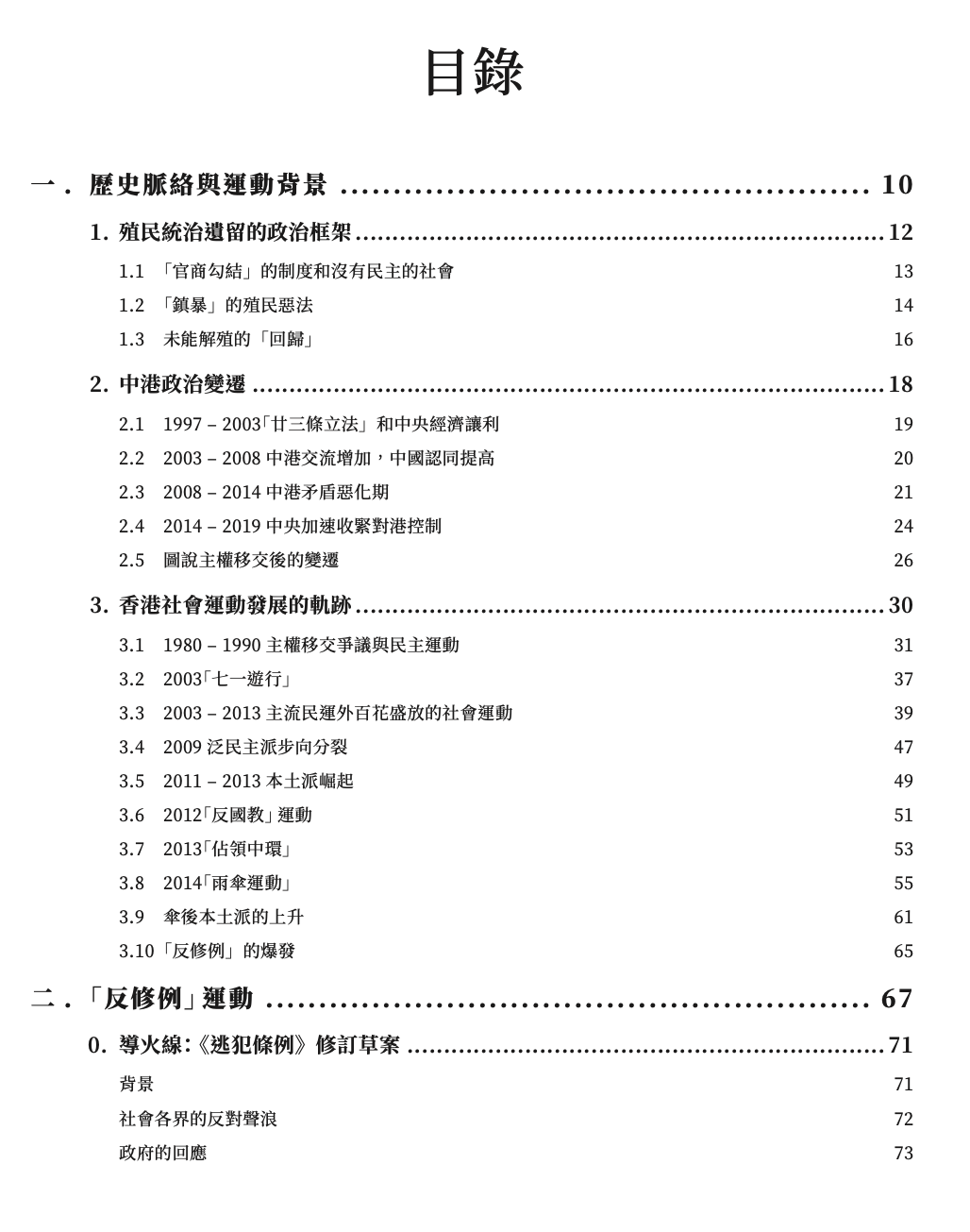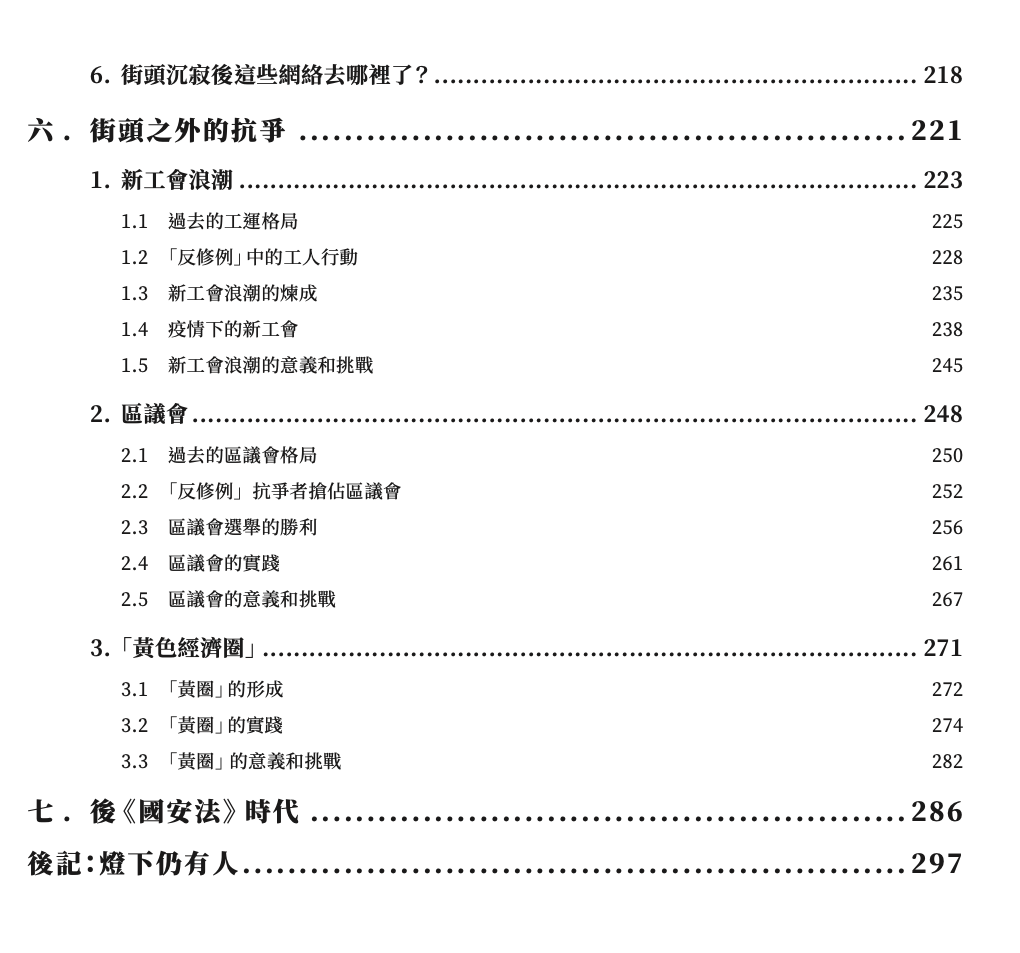The Great Turning Point: 2019-2020 Hong Kong Sports Record|Download link attached
On June 9, 2019, 1.03 million Hong Kong citizens took to the streets to oppose the revision of the "Fugitive Offenders Ordinance". The crowds marched from day to night after a long wait in the sweltering summer. In the blink of an eye, the "anti-extradition law" movement is approaching its second anniversary. In the past period of time, many people have been asking "what happened in Hong Kong?" Regarding this question, millions of people who have flocked to the streets may have different versions of the answer.
Regarding the "anti-revision" movement that broke out in 2019, the official media's characterization and fake news are overwhelming. Although there are also a large number of records contributed by participants, journalists, and scholars in the private sector, with the rapid changes in the movement, readers in the Chinese world must wear It is still very difficult to penetrate the narrative of the national public opinion machine, discriminate and analyze massive amounts of information, and understand the development trajectory of the movement. I believe that many friends have these questions in their hearts: Is the movement in Hong Kong created by a small group of radicals? Why have the "Fugitive Offenders Ordinance" been withdrawn, and the demonstrators continue to take to the streets? Why does exercise last so long? How was the "No Big Taiwan" movement organized? Is this a movement for Hong Kong independence? Is the 2020 campaign still on? How does the National Security Law affect the movement?
Just because we want to promote thinking and sincere discussions on these issues, we started this writing project in the spring of 2020, sorting out the historical context of social movements in Hong Kong, and the pro-democracy movement detonated by the "Extradition Ordinance" from the spring of 2019 to 2021 The trajectory of spring. This book focuses on systematically presenting the historical context, overall structure and development of the movement. Due to space limitations, this book cannot cover all the details, but readers who are interested in learning more can refer to the media reports and interviews on the right, the video QR code and the "extended reading" at the end of each chapter.
This book is divided into seven parts: "Historical Context and Movement Background", "Anti-Revision Law Movement", "How did "Mass Collaboration" happen?" >, "Struggle on the Streets", "Logistical Network Behind the Street Struggles", "Struggles Outside the Streets", "Post-"National Security Law" Era".
- The Hong Kong movement in 2019 originated from the democratic movement of the past 30 years, but it is also a denial of the past democratic movement paradigm. In "Historical Context and Movement Background" , through a three-part historical overview, we understand the political environment in Hong Kong on the eve of the "anti-extradition law" and the historical factors that constitute this environment. The first part sorts out the macro context of social contradictions planted by the "political framework left over from British colonial rule"; the second part reviews the central government's thinking on Hong Kong governance, changes in the political and economic system, and citizens' recognition after the transfer of sovereignty; the third part is To sort out the changing trajectory of political thoughts and "resistance dramas" in Hong Kong social movements before 2019.
- Although the "anti-amendment law" movement was detonated by the Hong Kong government's proposed amendment to the " Fugitive Offenders Ordinance ", the goal of the movement surpassed the controversy over the amendment in a short period of time, and evolved into a large-scale mass of people who resisted the government and the police force and demanded more comprehensive social changes sports. In the chapter "Anti-Revision Bill Movement" , we started with the "Revised Draft" which was the trigger, and then sorted out the period from February 2019 (Po Leung Kuk proposed a revised bill) to June 30, 2020 ("National Security Movement developed between the Gazette Act). To make it easier for readers to grasp and understand the trajectory of change, we roughly divide it into three stages and list the key events, explaining the protesters’ movement goals and changes in their struggle strategies. Finally, short answers to frequently asked questions, including whether the "anti-amendment bill" has a basis in public opinion, whether it is a "Hong Kong independence" movement, what is "soliciting speculation", etc.
- <How does "crowd collaboration" happen? 〉 It is organized in two parts in the "anti-revision" movement. When there is no "big platform", how do the masses connect, mobilize and participate on a large scale. The first part introduces the action consensus widely accepted by protesters such as "no division, no separation, no gray", "no distinction between courage and courage". The second part introduces the "new media platform" as a carrier of mass communication and collaboration, the role it played in the movement, and the government's suppression and limitations.
- In the second half of 2019, the "street" is an important field for protesters to directly resist, form common experience and collective connection. "Protesting on the Streets" , the first part sorts out violent suppression by the police force, torture and sexual violence, large-scale indiscriminate arrests, and extrajudicial violence from government supporters; the second part sorts out the strategies and forms of protesters' street protests, including Large-scale peaceful demonstrations, radicalized impact actions, guerrilla road blockages that hinder the operation of the city, "private", "renovation", community flash mob actions. Large-scale demonstrations keep the energy of the struggle visible in the public sphere, driving more citizens to join the movement and opening up other "fronts" to put pressure on the regime.
- In the wave of street demonstrations, a large number of protesters spontaneously organized logistics networks to respond to the needs of demonstrators in various aspects, creating the resilience of street actions under political suppression and surveillance. "Logistical Network Behind Street Protests" introduces the formation and operation of the network of "Cultural Propaganda Team", "Instant Information Desk", "Logistical Support", "Medical and Emotional Support", and "Support for Arrested Protesters". These dense micro-social networks have also become important nodes connecting protesters, preserving the relationship between protesters, and becoming the basis for the movement to take root in daily life and communities.
- At the end of 2019, when the street protests continued to face difficulties under the suppression, the logistical support network, trade union lines, international lines, parliamentary lines, yellow economic circles and other resistance positions came up. "Protests Beyond the Streets" sorts out the development process of the three positions of the new trade unions, district councils, and the "yellow economic circle" in the movement, and summarizes the practice, significance, and limitations of the protesters. At the beginning of 2020, the new crown pneumonia epidemic broke out in Hong Kong. In the rapidly narrowing political environment, the network formed during the movement became the main body of civil society's "self-help and anti-epidemic", and the goal of "anti-epidemic" carries the energy of the movement. At the same time, these networks are also important positions for maintaining the connection of protesters, resisting the erosion of daily life by political suppression, and vocalizing resistance.
- On June 30, 2020, the Standing Committee of the National People's Congress passed the "National Security Law for the Hong Kong Area", and the Hong Kong Special Administrative Region Government promulgated it for implementation the next day. The "National Security Law" is not just a law, but an ideological program and governance thinking in a new era. The chapter "Post-"National Security Law" Era" briefly sorts out the political meaning of the "National Security Law", and then reviews the implementation of the "National Security Law" from the perspectives of ideology, large-scale prosecution, parliamentary lines, and civil society networks. Legal and administrative tactics, repression and control of civil society.
When this book was released, more than 10,000 people were arrested and faced unfair trials and long sentences; Control is spreading rapidly; the "front lines" of resistance have moved from the streets to every aspect of workplaces and daily life; history is being quietly rewritten, traces of the movement in the city are being erased, and the propaganda machine is deafeningly broadcasting the "truth" of 2019.
However, people will never forget what happened in 2019. In 2019, tens of thousands of people stopped being silent and forbearance, and responded to the regime's gradual oppression with "resistance" and "action", exposing "the original normality is the problem." After 2019, people in Hong Kong no longer pretend to live as usual. Now is the dark time, but also the time to create the future together.
This book is written for all those in prison, those on the streets, those who have not given up struggling to find a way out, and those who are willing to learn about the Hong Kong movement with us. I am afraid that our collation and records cannot cover the whole picture of the Hong Kong movement, but can only leave some clues for readers who are interested in understanding Hong Kong. But I sincerely hope that this writing attempt can dig a hole in the high stone wall that blocks communication, bring the possibility of dialogue, and also refine it into a starting point for connection and resistance.




"What Really Happened in Hong Kong" Traditional Chinese e-book (PDF) Download:
tinyurl.com/TC-WhatHappenedinHK
"What Happened in Hong Kong" simplified e-book (PDF) download:
tinyurl.com/SC-WhatHappenedinHK
Like my work? Don't forget to support and clap, let me know that you are with me on the road of creation. Keep this enthusiasm together!













































- Author
- More